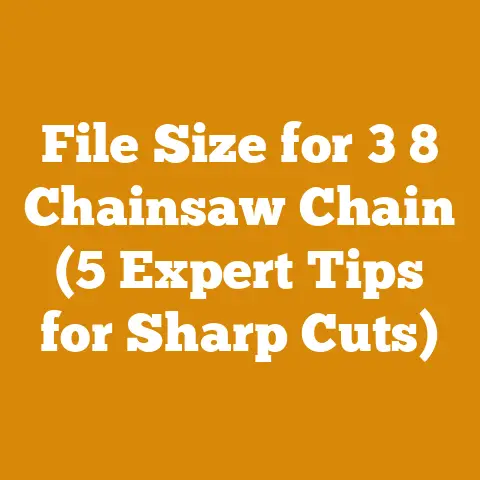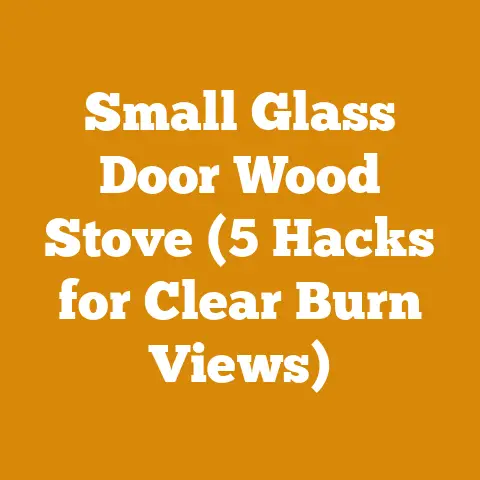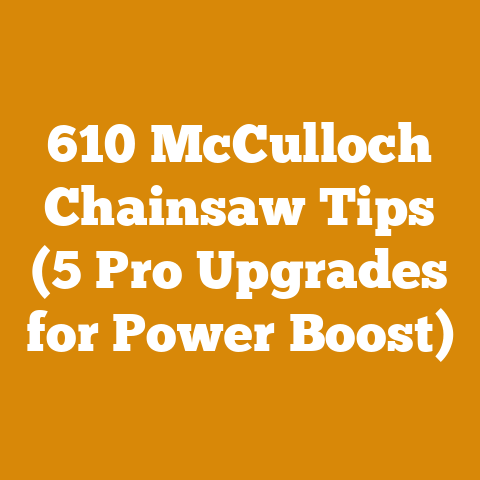Curved Fence Top Techniques for Slats (5 Pro Woodcraft Tips)
Have you ever dreamt of a fence that isn’t just a barrier, but a statement piece? A curved-top slat fence can transform your yard, adding elegance and a touch of artistry. But before you dive in, understanding the costs involved is crucial. Many woodworkers get caught off guard by the hidden expenses. I’m here to guide you through the maze of material selection, labor considerations, and tool investments so that your curved-top fence project stays beautiful and budget-friendly. Forget unexpected bills; let’s build a plan that works.
Curved-Top Slat Fence Costs: A Woodworker’s Budget Blueprint
Building a curved-top slat fence is more than just cutting wood; it’s an investment. Whether you’re aiming for a rustic charm with cedar or a modern look with treated pine, the choice of materials, design complexity, and even the weather can dramatically impact your final bill. I’ll break down the cost components, share insights from my own woodworking adventures, and equip you with the knowledge to make informed decisions.
The Variable Landscape: Understanding Cost Drivers
Before we delve into specific numbers, let’s acknowledge the ever-shifting sands of project costs. A curved-top fence project isn’t a one-size-fits-all scenario.
- Wood Species: The price of lumber varies wildly. A readily available pine will cost significantly less than exotic hardwoods.
- Project Size: Obviously, a small decorative fence will be cheaper than enclosing an entire property. Linear footage is a key driver.
- Design Complexity: Simple curves are easier and cheaper to execute than intricate, multi-layered designs.
- Location: Lumber prices, labor rates, and permit fees vary significantly from region to region.
- DIY vs. Professional: Doing it yourself saves on labor, but requires time, skill, and the right tools.
- Seasonality: Lumber prices can fluctuate depending on the time of year and demand.
- Material Quality: Choosing premium, knot-free lumber will increase material costs but can improve longevity.
- Finishing: Staining, sealing, or painting adds to the cost but protects the wood and enhances its appearance.
Component Breakdown: Deconstructing the Fence Budget
Now, let’s dissect the anatomy of a curved-top slat fence budget. I’ll break down each component, providing average cost ranges and factors that influence those numbers.
Lumber: The Foundation of Your Fence
Lumber is the most significant cost component. Let’s examine the common choices:
- Pressure-Treated Pine: A budget-friendly option, pressure-treated pine resists rot and insects, making it suitable for outdoor use. Expect to pay between $3 to $7 per linear foot for standard fence boards.
- Cedar: Known for its natural beauty and resistance to decay, cedar is a popular choice. Prices range from $8 to $15 per linear foot.
- Redwood: Similar to cedar in its properties and appearance, redwood offers a warm, rich tone. Expect to pay $10 to $20 per linear foot.
- Exotic Hardwoods (Ipe, Mahogany): These hardwoods offer exceptional durability and a luxurious look. Prices can be significantly higher, ranging from $25 to $50+ per linear foot.
Cost Factors:
- Grade: Higher grades (clear, knot-free) command a premium.
- Thickness and Width: Thicker and wider boards are more expensive.
- Supplier: Prices vary between lumberyards and big-box stores.
- Quantity: Buying in bulk can often lead to discounts.
Personal Story: I once built a small cedar fence using reclaimed wood from an old deck. While it saved me money on materials, the extra time spent cleaning, sanding, and prepping the wood more than offset the savings. Sometimes, paying a bit more for new lumber is worth it.
Data Point: According to the National Association of Home Builders (NAHB), lumber prices can fluctuate significantly due to factors like tariffs, transportation costs, and demand. Tracking these trends can help you time your purchase strategically.
Posts: The Backbone of Your Fence
Posts provide the structural support for your fence. They are typically made of pressure-treated pine, cedar, or metal.
- Pressure-Treated Pine: The most common and affordable option. Expect to pay $15 to $30 per post, depending on size and length.
- Cedar: Offers a more aesthetically pleasing look and better resistance to decay. Prices range from $30 to $60 per post.
- Metal: Provides superior strength and longevity. Prices range from $40 to $100+ per post.
Cost Factors:
- Size: Larger posts are more expensive.
- Length: Longer posts are needed for taller fences.
- Material: Metal posts are more expensive than wood.
- Installation Method: Setting posts in concrete adds to the cost.
Data Point: Post spacing typically ranges from 6 to 8 feet. Closer spacing provides greater stability but requires more posts, increasing the overall cost.
Hardware: The Invisible Essentials
Hardware includes screws, nails, brackets, and gate hardware. While seemingly small, these costs can add up.
- Screws and Nails: Choose exterior-grade fasteners to prevent rust and corrosion. Expect to spend $20 to $50 per project.
- Brackets and Connectors: These are used to attach fence boards to posts. Prices vary depending on the type and size. Expect to spend $10 to $30 per post.
- Gate Hardware: Hinges, latches, and handles can range from $20 to $100+, depending on the quality and style.
Cost Factors:
- Material: Stainless steel hardware is more expensive but offers superior corrosion resistance.
- Quality: Higher-quality hardware will last longer and perform better.
- Quantity: Buying in bulk can save money.
Tip: Invest in quality hardware. Cheap hardware can fail prematurely, leading to costly repairs.
Concrete: Anchoring Your Fence
Concrete is used to set the posts securely in the ground.
- Cost: Expect to spend $5 to $10 per post for concrete.
Cost Factors:
- Quantity: The amount of concrete needed depends on the size of the post hole.
- Premixed vs. Mixing Your Own: Premixed concrete is more convenient but more expensive.
Tip: Use a post hole digger to create consistent and efficient post holes.
Labor: The Value of Expertise
If you’re not a DIY enthusiast, you’ll need to factor in labor costs.
- Cost: Labor rates vary widely depending on location and the complexity of the project. Expect to pay $5 to $15 per linear foot for professional installation.
Cost Factors:
- Location: Labor rates are higher in urban areas.
- Experience: Experienced contractors charge more.
- Complexity: Intricate designs require more labor.
- Permits: Some municipalities require permits for fence construction, which adds to the cost.
Personal Story: I once hired a contractor to install a fence, and I regretted not getting multiple quotes. His initial estimate seemed reasonable, but he added unexpected charges for minor issues. Always get at least three quotes and clarify what’s included in the price.
Data Point: According to HomeAdvisor, the national average cost to install a fence ranges from $2,000 to $8,000.
Tools: Equipping Your Workshop
If you’re tackling this project yourself, you’ll need the right tools.
- Essential Tools:
- Chainsaw (for cutting curves): $150 – $500+
- Circular Saw: $50 – $200
- Miter Saw: $100 – $500
- Drill/Driver: $50 – $200
- Post Hole Digger: $30 – $100
- Level: $20 – $50
- Measuring Tape: $10 – $30
- Safety Glasses: $10 – $20
- Gloves: $10 – $20
- Optional Tools:
- Power Planer: $100 – $300
- Router: $100 – $300
- Sander: $50 – $150
Cost Factors:
- Quality: Professional-grade tools are more expensive but more durable.
- New vs. Used: Buying used tools can save money.
- Rental: Renting tools may be a cost-effective option for one-time projects.
Tip: Invest in quality safety gear. Protecting yourself is paramount.
Finishing: Protecting and Enhancing Your Fence
Finishing your fence with stain, sealant, or paint will protect it from the elements and enhance its appearance.
- Stain: Expect to spend $20 to $50 per gallon.
- Sealant: Expect to spend $20 to $50 per gallon.
- Paint: Expect to spend $30 to $70 per gallon.
Cost Factors:
- Quality: Higher-quality finishes offer better protection and longevity.
- Coverage: Some finishes require multiple coats.
- Application Method: Spraying is faster but requires more material.
Personal Story: I once used a cheap stain on a fence, and it faded within a year. Investing in a high-quality stain is worth the extra cost.
Data Point: According to Consumer Reports, some stains can last up to 10 years with proper application.
The Curved Top: Mastering the Art
The curved top is what sets this fence apart. There are several techniques to achieve this look, each with its own cost implications.
Jigsaw Method
This is the simplest and most affordable method for creating curved tops.
- Process: Use a jigsaw to cut the curves freehand or with a template.
- Cost: Requires only a jigsaw and sandpaper.
- Pros: Affordable, easy to learn.
- Cons: Can be time-consuming, difficult to achieve consistent curves.
Tip: Use a fine-tooth blade for smoother cuts.
Router Table Method
This method produces more consistent and professional-looking curves.
- Process: Use a router table with a template to shape the curves.
- Cost: Requires a router table, router, and template.
- Pros: Produces consistent curves, faster than the jigsaw method.
- Cons: Requires more specialized tools, steeper learning curve.
Tip: Use a bearing-guided router bit for smoother cuts.
Band Saw Method
A band saw offers greater precision and control for cutting curves.
- Process: Use a band saw to cut the curves freehand or with a template.
- Cost: Requires a band saw.
- Pros: Offers greater precision and control, faster than the jigsaw method.
- Cons: Requires a band saw, which can be expensive.
Tip: Use a narrow blade for tighter curves.
CNC Routing
For complex or intricate curves, CNC routing offers the ultimate precision.
- Process: Use a CNC router to cut the curves based on a digital design.
- Cost: Requires access to a CNC router, which can be expensive or require outsourcing.
- Pros: Produces highly accurate and consistent curves, allows for complex designs.
- Cons: Requires specialized equipment and software, expensive.
Tip: Consider outsourcing CNC routing if you don’t have access to the equipment.
Steam Bending
This technique involves softening the wood with steam and bending it to the desired curve.
- Process: Steam the wood and bend it around a form.
- Cost: Requires a steam box and bending form.
- Pros: Creates smooth, flowing curves, can be used with thicker wood.
- Cons: Requires specialized equipment and knowledge, time-consuming.
Tip: Use hardwoods like oak or ash for steam bending.
Data Point: A basic steam bending setup can cost between $200 and $500.
Putting it All Together: Sample Budget Scenarios
To illustrate the cost implications, let’s consider three sample budget scenarios for a 100-foot curved-top slat fence:
Scenario 1: Budget-Friendly (DIY, Pressure-Treated Pine, Jigsaw Method)
- Lumber (Pressure-Treated Pine): 100 ft x $4/ft = $400
- Posts (Pressure-Treated Pine): 14 posts x $20/post = $280
- Hardware: $100
- Concrete: 14 posts x $7/post = $98
- Tools (Jigsaw, Basic Hand Tools): $200 (assuming you already own some tools)
- Finishing (Stain): $50
- Labor: $0 (DIY)
- Total: $1128
Scenario 2: Mid-Range (DIY, Cedar, Router Table Method)
- Lumber (Cedar): 100 ft x $12/ft = $1200
- Posts (Cedar): 14 posts x $45/post = $630
- Hardware: $150
- Concrete: 14 posts x $7/post = $98
- Tools (Router Table, Router): $400 (assuming you already own some tools)
- Finishing (Sealant): $75
- Labor: $0 (DIY)
- Total: $2553
Scenario 3: Premium (Professional Installation, Redwood, CNC Routing)
- Lumber (Redwood): 100 ft x $18/ft = $1800
- Posts (Redwood): 14 posts x $50/post = $700
- Hardware: $200
- Concrete: 14 posts x $7/post = $98
- CNC Routing: $500 (outsourced)
- Finishing (High-Quality Stain): $100
- Labor: 100 ft x $10/ft = $1000
- Total: $4398
Important Note: These are just estimates. Actual costs may vary depending on your specific circumstances.
Cost Optimization: Saving Money Without Sacrificing Quality
Now that we’ve explored the cost components, let’s discuss strategies for optimizing your budget.
- Shop Around: Get quotes from multiple lumberyards and contractors.
- Buy in Bulk: Purchase lumber and hardware in bulk to save money.
- Choose the Right Wood: Consider using a less expensive wood species, such as pressure-treated pine.
- DIY: If you have the skills and time, consider doing the work yourself.
- Rent Tools: Renting tools can be more cost-effective than buying them.
- Simplify the Design: Simple curves are cheaper to execute than intricate designs.
- Proper Maintenance: Regular maintenance can extend the life of your fence and prevent costly repairs.
- Reclaimed Wood: Using reclaimed wood can save money and add character to your fence. Be aware of the extra time it takes to prep the wood.
- Time of Year: Lumber prices are often lower during the off-season.
- Negotiate: Don’t be afraid to negotiate prices with suppliers and contractors.
Data Point: According to the U.S. Department of Agriculture, proper wood preservation can extend the life of wooden structures by up to 50%.
Budgeting Tools: Resources for Planning
Several online tools can help you plan your fence project and estimate costs.
- Online Fence Calculators: These tools allow you to input the dimensions of your fence and get an estimate of the materials needed.
- Lumber Price Trackers: These websites track lumber prices and can help you time your purchase strategically.
- Cost Estimating Websites: Websites like HomeAdvisor and Thumbtack provide average cost estimates for fence installation in your area.
Challenges Faced by Small-Scale Loggers and Firewood Suppliers
The cost of raw materials trickles down from the source. Small-scale loggers and firewood suppliers face their own set of challenges that ultimately affect the price you pay for wood. These include:
- Fluctuating Timber Prices: Timber prices can be volatile, making it difficult for loggers to plan their operations.
- Equipment Costs: Logging equipment is expensive to purchase and maintain.
- Transportation Costs: Transporting logs and firewood can be costly, especially in remote areas.
- Regulations: Logging is subject to strict regulations, which can add to the cost of operations.
- Competition: Small-scale loggers and firewood suppliers face competition from larger companies.
- Seasonality: Logging and firewood sales are seasonal, which can make it difficult to generate income year-round.
- Labor Costs: Finding and retaining skilled labor can be a challenge.
Tip: Supporting local loggers and firewood suppliers can help ensure a sustainable supply of wood and promote local economies.
Actionable Takeaways and Next Steps
Building a curved-top slat fence is a rewarding project that can add beauty and value to your property. By understanding the costs involved and implementing cost optimization strategies, you can create a stunning fence without breaking the bank.
- Define Your Budget: Determine how much you’re willing to spend on the project.
- Choose Your Materials: Select the wood species and hardware that fit your budget and aesthetic preferences.
- Plan Your Design: Simplify the design to reduce costs.
- Get Quotes: Obtain quotes from multiple lumberyards and contractors.
- Consider DIY: If you have the skills and time, consider doing the work yourself.
- Rent Tools: Renting tools can be more cost-effective than buying them.
- Proper Maintenance: Regular maintenance can extend the life of your fence.
- Enjoy Your Fence: Step back and admire your beautiful new fence!
Conclusion: A Fence to Be Proud Of
Building a curved-top slat fence is an investment in your property and your enjoyment of your outdoor space. By carefully planning your budget, choosing the right materials, and implementing cost optimization strategies, you can create a fence that you’ll be proud of for years to come. Don’t let the fear of costs deter you from pursuing this project. With a little knowledge and planning, you can turn your vision into reality. So, grab your tools, put on your safety glasses, and start building! Your dream fence awaits.






